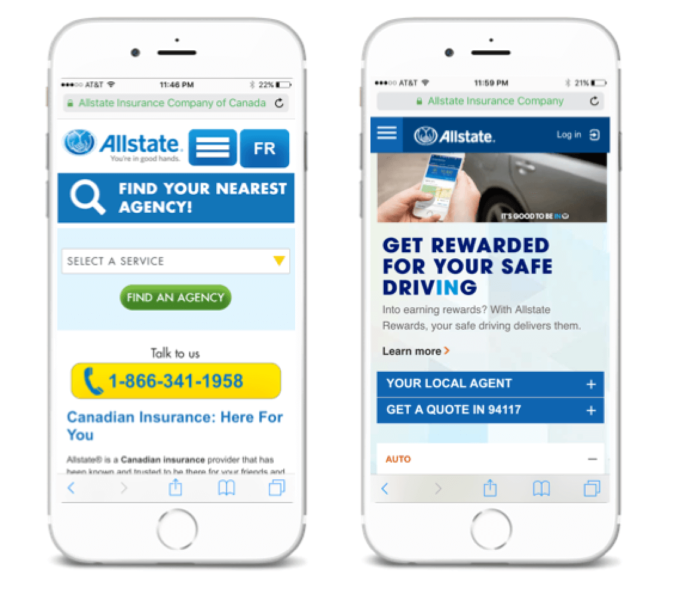Allstate: Offline call data improved SEM performance and the customer experience
Company generated an increase in quality calls and lowered customer acquisition costs.
Call tracking, now generally rebranded as “call intelligence” or “call analytics,” went from being a novelty in the SEM world a few years ago to a perceived commodity today. However, the benefits of using call analytics extend well beyond campaign optimization into operational and customer experience insights for brands and marketers.
Allstate offers a case study, which was presented last week at SMX East. The company worked with Invoca on a paid-search campaign specifically for local insurance agents in multiple provinces in Canada, including French-speaking Quebec.
As a basic matter, call data provides insight into what’s happening “offline.” As I’ve written multiple times before, this is now critical for all digital marketers (whether search or display).
Using DoubleClick for search and Invoca, Allstate was able to combine click and call data for improved bidding and targeting. Allstate was able to identify the keywords that resulted in calls and then analyzed which of those calls generated quotes and later sales.
Allstate was also able to improve local agent productivity by using Invoca’s technology to block unwanted telemarketing inbound spam calls to agents — a kind of mirror of the online click fraud problem. It also obtained considerable audience data based on the location of calls.
The company found that most online quote requests came from the PC. The majority of calls were coming from mobile phones, which offered better leads. Allstate reported the following campaign results:
- a 16-percent increase in calls year over year;
- a more than 50-percent decrease in abandoned calls; and
- decreased customer acquisition costs.
Rather than optimizing against clicks and using lead-capture forms to determine efficacy, Allstate was able to optimize against real ROI metrics, using call analytics. Perhaps most interesting, however, was how Allstate moved beyond campaign optimization and was able to use call data to improve the customer experience.
Allstate discovered that its previous IVR (interactive voice response) menu, which ran in excess of 60 seconds, was causing people to drop off calls in impatience or frustration. The company shortened the IVR message for paid-search callers and improved call routing. Accordingly, it was able to capture more high-intent leads.
It was also able to do a better job, using location data, to route calls to local agents and the correct default language. Overall, the call experience, where most sales happened, was improved, and the company was able to close more business.
Opinions expressed in this article are those of the guest author and not necessarily Search Engine Land. Staff authors are listed here.
Related stories

